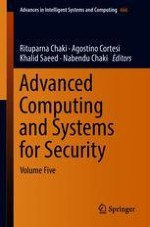This book contains extended version of selected works that have been discussed and presented in the fourth International Doctoral Symposium on Applied Computation and Security Systems (ACSS 2017) held in Patna, India during March 17-19, 2017. The symposium was organized by the Departments of Computer Science & Engineering and A. K. Choudhury School of Information Technology, both from University of Calcutta in collaboration with NIT, Patna. The International partners for ACSS 2016 had been Ca Foscari University of Venice, Italy and Bialystok University of Technology, Poland.
This bi-volume book has a total of 21 papers divided in 7 chapters. The chapters reflect the sessions in which the works have been discussed during the symposium. The different chapters in the book include works on biometrics, image processing, pattern recognition, algorithms, cloud computing, wireless sensor networks and security systems.
